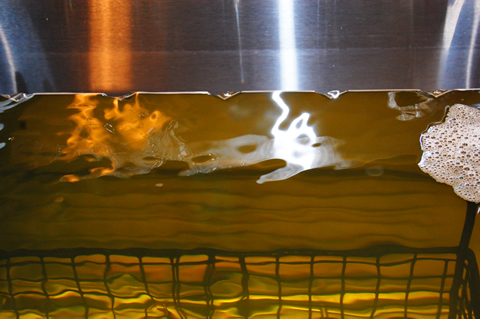SAE AMS 2700 E Method II
Society of Automotive Engineers Aerospace Material Specification 2700 E method Two Citric Acid

Similar to ASTM A-967
Citric Acid meets the requirements for both AMS 2700 and ASTM A-967 passivation specifications.
How We Apply AMS 2700
Material
Bath Composition - Parts shall be immersed in an aqueous solution of 4 to 10 weight percent citric acid. We run our passivation baths between 3.2 and 3.7 PH which is the average operating PH of about 10% Citric Acid and 90% Reverse Osmosis water.
Process
Bath Temperature - "Bath temperature shall be 70°F to 160°F (21°C to 71°C) with an immersion time not less then 4 minutes for baths operating 140°F (60°C), not less than 10 minutes for baths operating in the 120°F to 140°F (49°C to 60°C) range, not less than 20 minutes for baths operating in the range of 100°F to 119°F (38°C to 48°C) or not less than 30 minutes for baths operating below 100°F (38°C). " Here at Applied Tungstenite we run our baths at 142°F for an average of 6 to 8 minutes depending on the material. If you want your material put through at a different time or temp please lets us know and we'll make it happen.
Final Rinse - Immediately after removal from the passivating solution the parts shall be thoroughly rinsed. Final rinse shall be carried out in clean water. We run our passivated parts are doubled rinsed in baths of DI water with a PH kept between 6PH-9PH and run at 142°F.
Drying - "Drying at high temperature allows the passive oxide layer to grow deeper into the metal." Tunnel Drying is not required by the AMS 2700 but we do it to get a better quality out of our citric acid passivation.
Testing Methods
Free Iron Test – Water Immersion Test, Copper Sulfate Test
